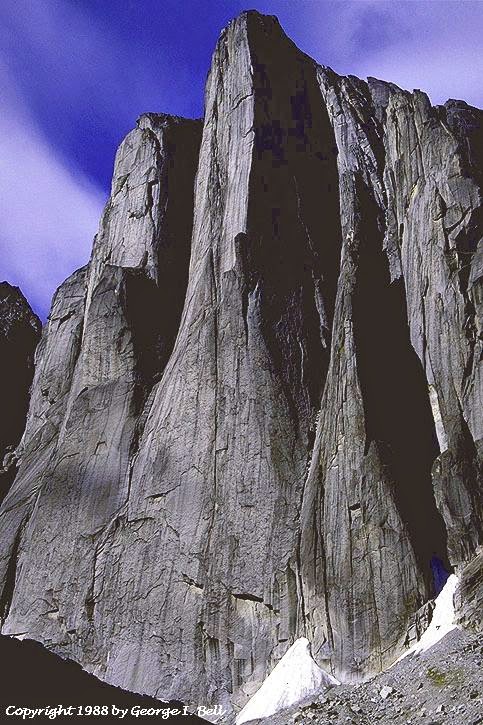How much do we know about Stonehenge? Less than we think. And what has Stonehenge got to do with the Ice Age? More than we might think. This blog is mostly devoted to the problems of where the Stonehenge bluestones came from, and how they got from their source areas to the monument. Now and then I will muse on related Stonehenge topics which have an Ice Age dimension...
Pages
▼
Wednesday, 13 August 2014
The Trango Towers, Karakoram, Pakistan
These are truly extraordinary rock pinnacles in the Karakoram range, on a narrow mountain ridge flanked by glaciers. The bedrock is apparently granite, but the real reason for the survival of the pinnacles must have something to do with intense vertical downcutting by glaciers over millions of years, combined with efficient evacuation of rock debris and maybe a minimal production of slabs and larger clasts by periglacial processes. What is remarkable is the lack of screes -- and in most upland areas screes do of course mask many of the lower slopes of peaks like these. Some types of granite just break down into sandy debris -- maybe that has something to do with it. And this area is rather arid too. An interesting geomorphological dilemma.......
From Wikipedia:
The Trango Towers are a group of tall granite spikes located on the north side of the Baltoro Glacier, in Baltistan, a region of the Gilgit-Baltistan territory in northern Pakistan. They are part of the Baltoro Muztagh, a sub-range of the Karakoram range. The Towers offer some of the largest cliffs and most challenging rock climbing in the world. The highest point in the group is the summit of Great Trango Tower at 6,286 m (20,608 ft). The east face of the Great Trango Tower features the world's greatest nearly vertical drop.
Structure of the group
All of the Trango Towers lie on a ridge, trending northwest-southeast, between the Trango Glacier on the west and the Dunge Glacier on the east. Great Trango itself is a large massif, with four identifiable summits: Main (6,286 m), South or Southwest (circa 6,250 m), East (6,231 m), and West (6,223 m). It is a complex combination of steep snow/ice gullies, steeper rock faces, and vertical to overhanging headwalls, topped by a snowy ridge system.
Just northwest of Great Trango is the Trango Tower (6,239 m), often called "Nameless Tower". This is a very large, pointed, rather symmetrical spire which juts 1000 m out of the ridgeline. North of Trango Tower is a smaller rock spire known as "Trango Monk." To the north of this feature, the ridge becomes less rocky and loses the large granite walls that distinguish the Trango Towers group and make them so attractive to climbers; however the summits do get higher. These summits are not usually considered part of the Trango Towers group, though they share the Trango name. Trango II (6,327 m) lies northwest of the Monk, and the highest summit on the ridge, Trango Ri (6,363 m), lies northwest of Trango II.
Just southeast of Great Trango (really a part of its southeast ridge) is the Trango Pulpit (6,050m), whose walls present similar climbing challenges to those of Great Trango itself. Further to the south is Trango Castle (5,753 m), the last large peak along the ridge before the Baltoro Glacier.






No comments:
Post a Comment
Please leave your message here